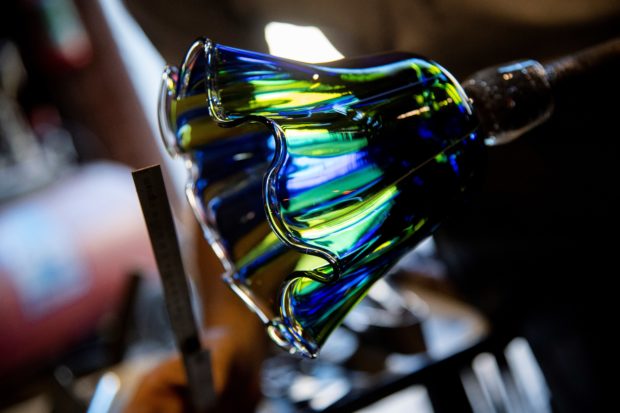
(FILES) In this file photo taken on September 08, 2020, A vase glass is shaped at the Gambero-Tagliapietra glass art products manufacturer on September 8, 2020, in Murano. – Venice hailed the UN’s decision on December 17, 2020, to put the art of glass beads on its list of the world’s intangible heritage, and expressed hope it would help craftsmen hit by the coronavirus pandemic. (Photo by Tiziana FABI / AFP)
ROME — Venice hailed Thursday a UN decision to put the art of glass beads on its Lists of Intangible Cultural Heritage, and expressed hope it would help artisans hit by the coronavirus pandemic.
The delicate and intricate beads are a specialty of the island of Murano, in the Italian city’s lagoon, where skilled workers have been making glass for centuries.
“It is a source of great pride to be able to see such a prestigious and significant recognition for one of the excellences of our tradition,” said Luigi Brugnaro, mayor of Venice, itself is a UN world heritage site.
Luca Zaia, president of the Veneto region, said it was “excellent news, which comes at a particularly difficult time for Venetian craftsmanship and its activities”.
“The activities of glass furnaces and artisans have been hard hit by the effects of the health crisis, many are on the brink due to the collapse of tourism but also due to the closure of international markets and fairs,” he said.
“We hope that this recognition will become a driving force for recovery.”
Normally thronged with tourists, Venice has become a ghost town in recent months due to the coronavirus pandemic.
UNESCO highlighted both Italy and France for the art of glass beads and the countries submitted a joint application, saying the practice “is closely linked to the wealth of knowledge and mastery of a material (glass) and element (fire)”.
The heritage body highlighted the “lume” technique, where glass is melted around a metal rod and then shaped, as well as “da canna” beads, made by cutting and softening hollow canes of glass.
The production of glass beads in Venice has been documented at least since the 14th century, and for hundreds of years, they were considered a precious commodity for exchange and export worldwide.
Even when the demand for glass objects fell, the production of pearls continued to flourish and kept the industry growing.
But the history of Venetian glass pearls has often been forgotten, as their creators are generally unknown, unlike the renowned glass masters, who crafted sculptures and vases in the Murano glass furnaces.
The glass factories have been based on the island since they were ordered to move there in 1291 after causing too many fires in the city’s center.